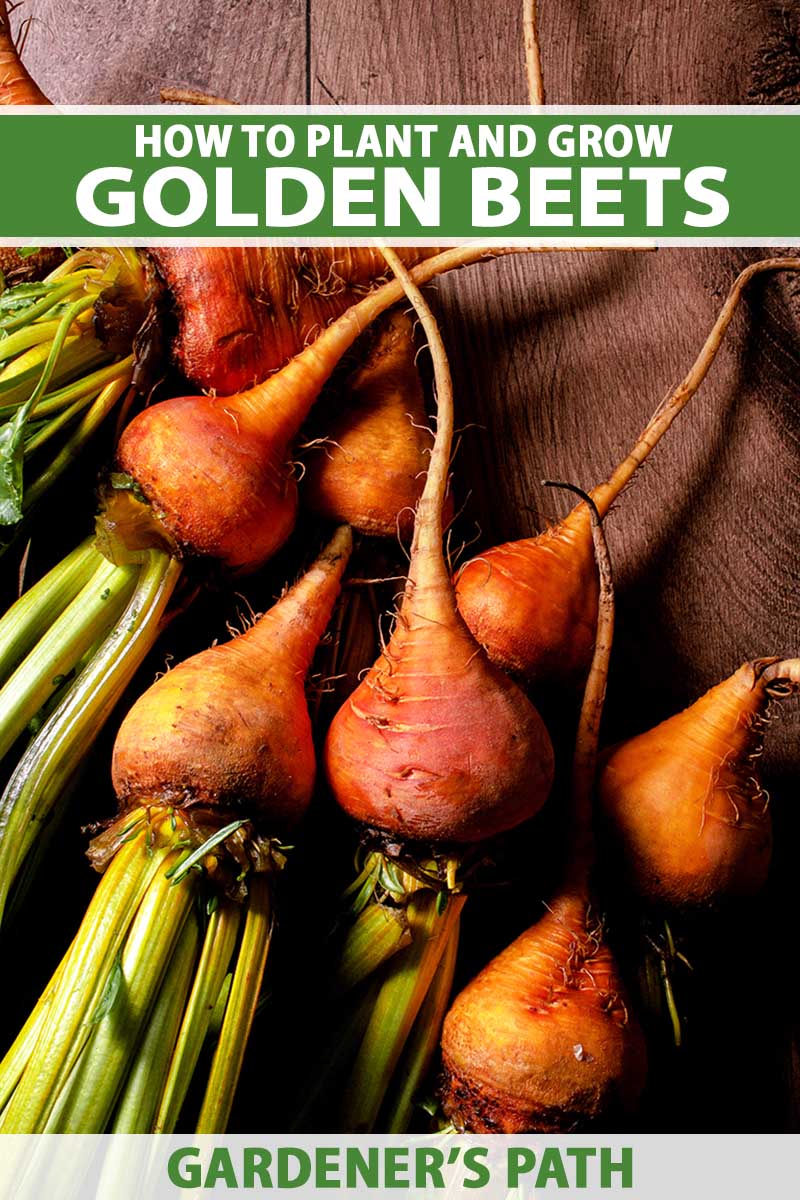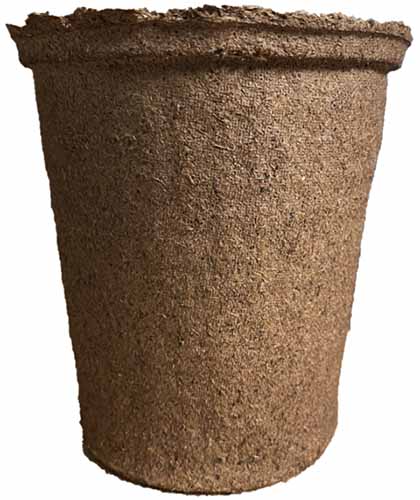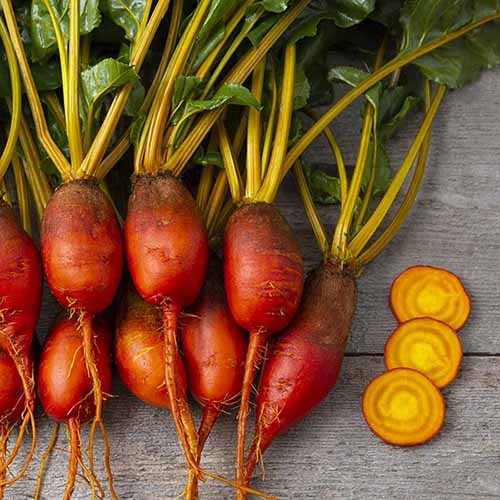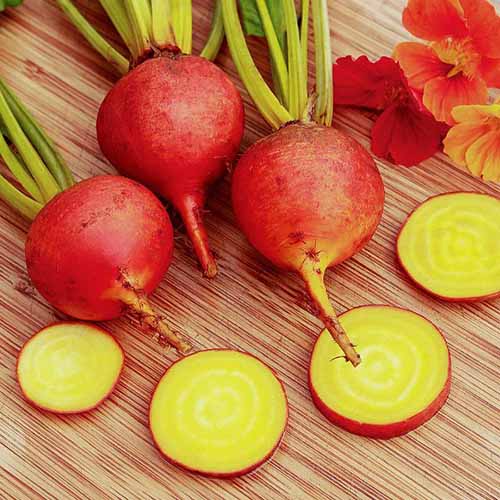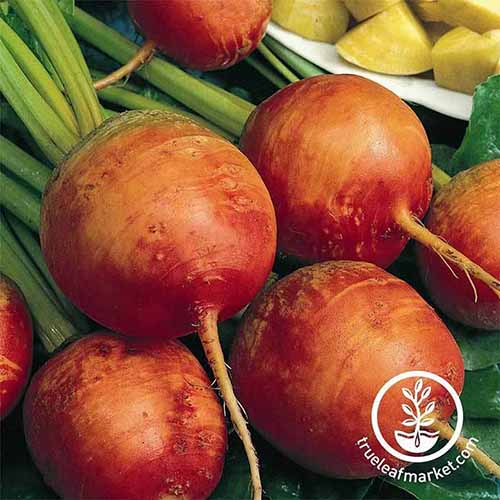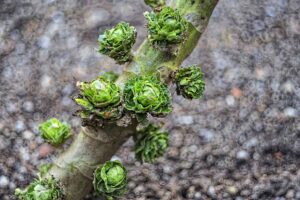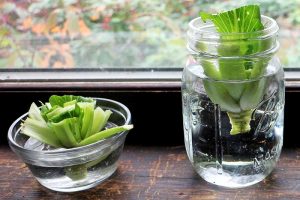Beta vulgaris subsp. vulgaris
When the cooler weather rolls in, my mind turns to beets. In soups, salads, roasted, boiled, raw, pickled, sliced, diced, I want beets.
I adore a blood-red option, with the juice staining my fingertips as I slice them open.
I’m a fan of the candy-striped types, adding decorative interest to the plate. But so many aficionados particularly love the golden ones, with their brighter flavor.

We link to vendors to help you find relevant products. If you buy from one of our links, we may earn a commission.
So, why golden beets? Why not stick with the classic?
Well, for one, golden beets are more sweet and less earthy. If you know someone who hates beets, you might be able to convert them by feeding them some of these, roasted to bring out the sugar.
Then there’s the staining. I have stained my cutting boards, fingers, and clothes while dealing with beet blood. Sometimes it’s fun, and sometimes I’m not in the mood to deal with the massacre.
Plus, they’re just pretty.
If you’re interested in raising some of these glorious treasures, then stick around for the following:
What You’ll Learn
Ready to go digging for gold? First, let’s talk about what sets these beets apart from the rest.
Cultivation and History
Closely related to chard, amaranth, and spinach, beets (Beta vulgaris subsp. vulgaris) have been around for a long, long time.
They were first cultivated from sea beets (B. vulgaris subsp. maritima) that grew in the Mediterranean region.
At first, they were cultivated for their leaves by Ancient Greeks and Romans, a legacy chard carries today.
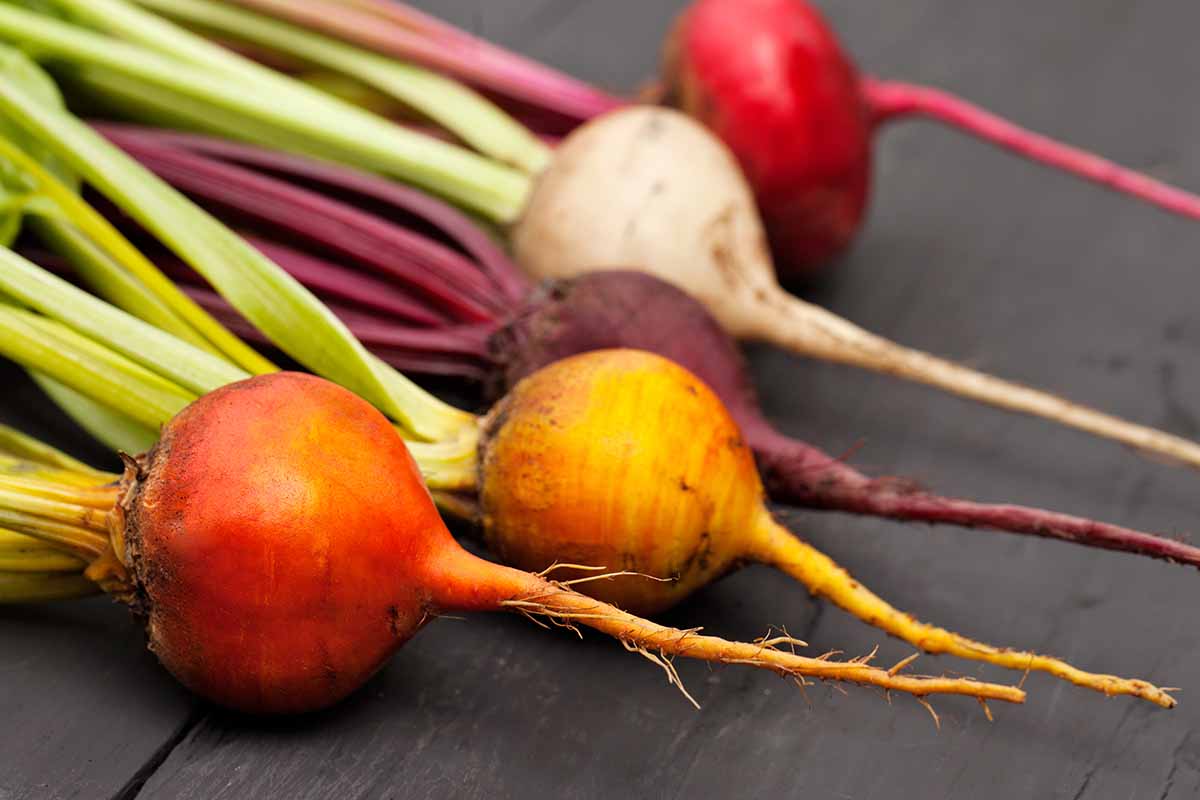
Along the way, those clever Romans decided that their roots were pretty tasty, and began cultivating them for those buried treasures.
At that point, all of them were either black or white rooted. By the 1400s, they became popular in other parts of Europe, too.
At some point between the Roman beet beginnings and then, yellow beets emerged. They were used as the parent to create modern sugar beets in the 1700s.
Golden beets contain antioxidants called betalains. Those with a yellow, gold, or orange hue have more betaxanthin and a smaller amount of betacyanins, whereas red and purple beets have more betacyanins and less betaxanthin, as well as more geosmin, the compound that gives beets that earthy flavor.
Red and purple beets have a higher amount of nitrates, and all colors have a good amount of vitamins A and C, along with heaps of beta-carotene, folate, and manganese.
As a result of this chemical makeup, golden beets tend to be sweeter and have less of those earthy notes that stand out so prominently in red ones. Golden roots also tend to have thinner skin.
Golden Beet Propagation
Beets don’t transplant well, what with their large roots, but they grow so well from seed, so that’s the way we do it.
Most types mature in about two months, so plant the seeds about two months before you want to dig in and when you will have local temperatures between 28 and 70°F.
Anything hotter than that and your plants run the risk of bolting, which is when the plant stops growing and puts its energy into producing seeds instead.
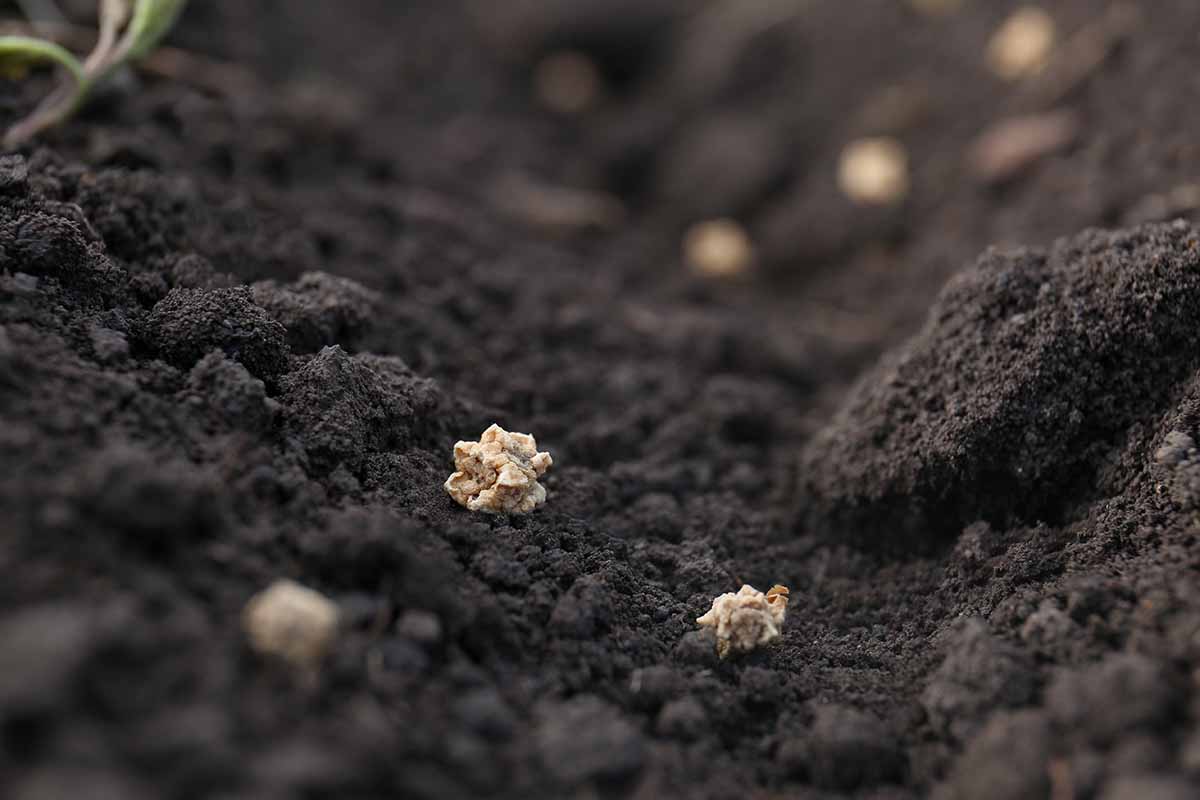
Before you plant, soak the seeds in water for a good hour or two to soften up that tough exterior.
You can also scarify the seeds by nicking them with a nail clipper or file. I find soaking works well enough, though.
You can start beets indoors if you don’t have a long growing season, but be sure to use biodegradable pots to reduce the shock to the roots when you transplant.
I like CowPots because they’re made using the extremely renewable resource of cow poop. Don’t worry, they don’t smell, and they’re safe to handle.
Grab deep ones, like the four-inch diameter, four-and-a-half-inch tall rounds from CowPots. Arbico Organics carries them in quantities of 144 or 300.
Fill your containers with loose, rich potting soil.
Or, if you’re direct sowing, dig down at least six inches and loosen up the soil, tossing out any rocks as you go. Work in lots of well-rotted compost too.
Remember, beets are happiest when you sow them directly into the garden.
Next, sow a seed or two (in case one doesn’t germinate) in each pot or in the prepared ground spaced three inches apart. Seeds should be sown about a quarter to half an inch deep.
Moisten the soil so it feels like a well-wrung-out sponge. You don’t want it any soggier than that.
Place the pots in an area with at least six hours of direct sunlight or under supplemental grow lights.
Keep the soil moist as the seeds germinate, which might take up to two weeks. Seeds will germinate more slowly in cool soil. Optimally, it should be above 50°F.
When the seedlings are three inches tall, thin out the weaker ones so the plants are three inches apart.
If you started your seeds indoors, harden the seedlings off for a week before you place your pots in the soil. The soil should be above 50°F when you transplant them.
To harden them off, place the pots in the spot where you intend to plant them and let them sit there for an hour. Then, bring them back inside.
The next day, give them two hours outdoors. Keep adding an hour each day for a week, and then you’re ready to transplant.
Into succession planting? Feel free to sow a few batches every few weeks so you can have a continual harvest.
How to Grow Golden Beets
If you want those pretty, uniform roots, you must prepare the area in advance.
If the roots encounter rocks or tree roots, they’ll be misshapen or stunted. And a good amount of well-rotted compost will never go amiss. Work some in unless you have some extremely loose, loamy, rich soil. The rest of us need to put in a little extra work.
You can also grow your root veggie gold in raised beds or containers filled with specialty raised bed soil or a potting mixture.
When building a raised bed or amending the soil, I like to use either my own compost or Happy Frog Soil Conditioner from FoxFarm.
It contains earthworm castings, bat guano, and forest humus to enrich the soil.

Pick up one and a half cubic feet at Amazon.
Once you’ve done the prep work, it’s smooth sailing. Your biggest jobs are going to be monitoring the soil moisture, and kicking weeds to the curb.
Weeds compete with the young beets for food, sun, and water. Plus, they act as hosts to nasty bugs and pathogens.
Just pluck them out with your fingers when they’re young. You don’t want to use a trowel or weeding tool near the plants because you might disturb the roots.
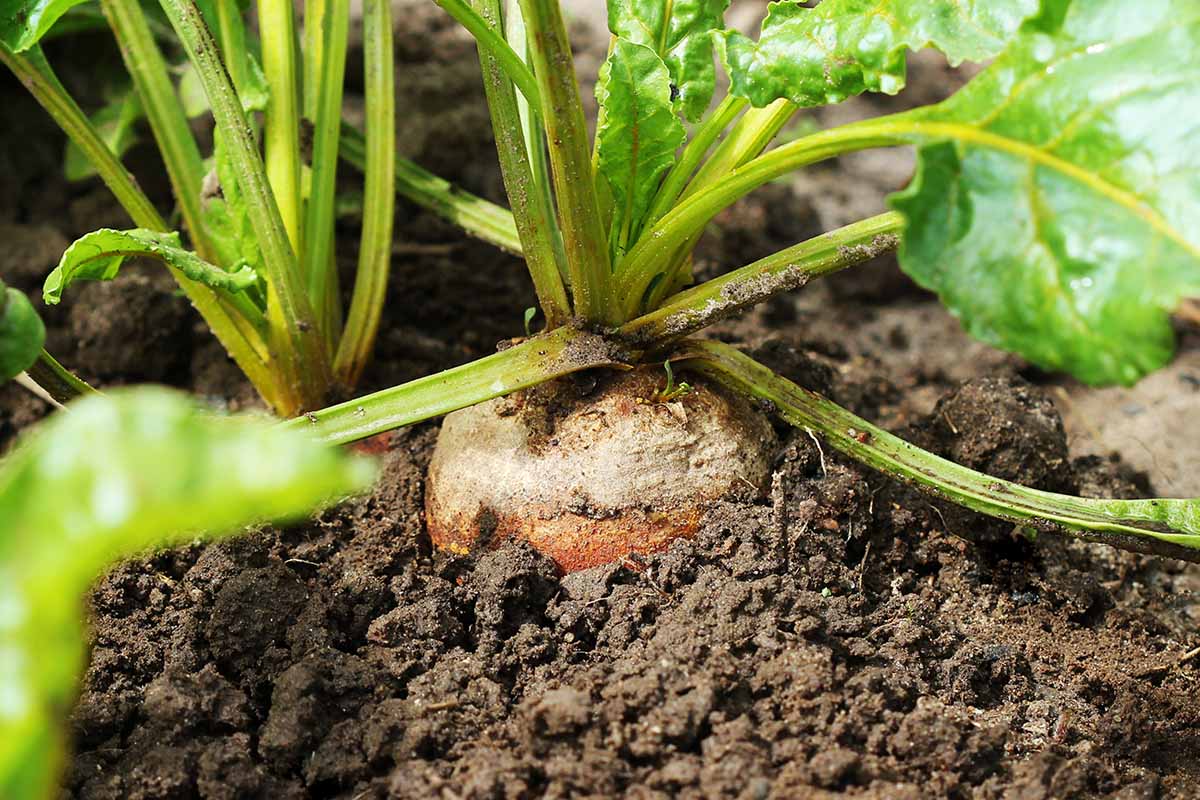
Beets like a good amount of moisture, but not too much. In my experience, too much water actually stunts the root growth.
They always look fantastic above ground with lots of greens, but below ground, the root is smaller than you’d expect.
You want the plant to put its energy into growing roots rather than the leaves. Otherwise, you would have planted chard, right?
Water infrequently and deeply. I let the soil dry out completely before adding more moisture.
If you see cracked roots when you harvest, it might be a sign that you let the soil become too dry. Obviously, there’s nothing you can do about it now, but keep that in mind for next time.
If you worked in compost or soil conditioner, there’s no need to fertilize. As with water, too much causes the plant to concentrate on its foliage and not its roots. We don’t want that.
Growing Tips
- Prepare the ground well to remove rocks and loosen it up.
- Weed the beds thoroughly.
- Allow the soil to just dry out before watering again.
Golden Beet Cultivars to Select
There are too many marvelous options to choose from and you can’t go wrong with any of them.
That said, here are a few popular cultivars and the reasons you might opt to go with one or more of them.
Badger Flame
‘Badger Flame’ was bred for foodies. It hits all the right notes, with a visually pleasing oblong root, which is unusual for beets.
It has a fiery-orange skin and a golden, ringed interior. If you’ve ever seen the white and red concentric rings on the interior of ‘Chiogga’ beets, picture them in orange and pale yellow instead. That’s what ‘Badger Flame’ looks like.
It was bred by plant geneticist and professor Irwin Goldman of the University of Wisconsin over 15 seasons specifically to have less geosmin than usual, so it lacks much of the polarizing earthiness that is the hallmark of red beets.
That means it’s sweet enough for raw eating and lends itself perfectly to cooking as well.
Don’t go thinking it isn’t delicious, though. It’s simply milder, with a crunch that lets it stand up next to other items like carrots and jicama on a raw veggie platter.
Unlike many new cultivars which are immediately patented so they can’t be reproduced, ‘Badger Flame’ was released as part of the Open Source Seed Initiative (OSSI), which was founded, in part, by Goldman.
That means the plants can be reproduced and shared far and wide. I always like to support those who make their hard work available to others.
If you do too, look for a seller that gives a portion of their profits back to the breeder or to OSSI, such as High Mowing Seeds.
A portion of their sales go back to the breeder. Buy a packet, and you can be enjoying your fantastic treats in just 55 days.
Boldor
‘Boldor’ gets compared to ‘Touchstone Gold’ a lot because they look extremely similar from the outside, but ‘Boldor’ has better germination rates and is more vigorous.
They grow so well that you might mistake this variety for a hybrid, but it’s an open-pollinated heirloom.
The roots are three inches across and perfectly round, with bright orange skin.
Inside, the flesh is pale yellow. While ‘Touchstone Gold’ wins in the vibrant flesh department, ‘Boldor’ has an exceptional flavor that few others can touch.
The golden veins and stems of the leaves of this heirloom are almost too pretty to eat. But they taste so flavorful that it’s a shame not to. The roots are ready to eat in 55 days.
High Mowing Seeds has seeds available in various quantities if the thought of digging in is making your mouth water. I know it is for me!
Burpee’s Golden
The dark golden skin encasing deep yellow flesh is enough to send these to the top of any beet lovers list.
But they’re also sweet, mildly earthy, and flavorful enough to be eaten raw, roasted, or pickled.
The greens are as delicious as they are beautiful, with a bright crunch and golden veins.
Some people thought this cultivar, which was released by Burpee in 1970, was identical to ‘Detroit Golden.’ Though they look similar, they are distinct cultivars.
Ready in just 50 days, you’re mere weeks away from enjoying these in your salads, soups, and stir fries.
Grab packages of 200 or four ounces of seeds from Burpee.
Detroit Golden
When people think of golden beets, this is often the one they imagine. With a mild flavor and bright color, it’s a feast for the eyes and the mouth.
The orange-red skin encases golden yellow flesh that turns buttercup yellow when cooked. The leaves aren’t to be outdone, either. They have bright yellow veins.
The shoulders don’t stay green, as can happen with some beets, and they’re much more vigorous and resistant to disease than the other classic, ‘Burpee’s Golden.’
The large, pyramidal shape of these heirloom veggies looks just as good bundled up in a farmer’s market basket as they do on the plate.
The golden globes are ready in just 60 days, so get started by heading straight to True Leaf Market to pick up a two-gram pack or an ounce, four-ounce, pound, five-pound, or 25-pound package of seeds.
Golden Boy
Drought tolerant, resistant to fungal issues like Cercospora, and slow to bolt in the heat, on top of being productive and high-yielding, you might pick ‘Golden Boy’ because he’s the best in the class.
But these roots have more than all that going for them. They’re also extremely tasty, with a sweet, slightly earthy flavor.
The perfectly round, uniform roots are ideal for bunching and are ready in about 65 days.
The leaves can sub in for rainbow chard with their bright yellow veins. Pick up a gram of seeds at Botanical Interests.
Touchstone Gold
Released by Alf Christianson Seed Company (now Sakata Seed Company), ‘Touchstone Gold’ is a beet by which all others can be measured.
It was bred to improve on the golden beets of yore, which tended to have poor germination rates and root uniformity that was all over the place.
It’s also resistant to zoning, which is a disorder that can affect the flavor.
The perfectly round four-inch roots have ‘Chioggia’-like rings in the buttery yellow flesh. On the outside, the bright orange skin is topped by pale yellow-veined green leaves.
It’s an extremely vigorous plant, and the seeds have a high germination rate and grow quickly.
The roots are ready to harvest in under 55 days. Find packets of 750 milligrams of organic seeds at Botanical Interests.
Yellow Mangel
This heirloom cultivar is incredibly tasty, which is a surprise, because mangel or fodder beets are usually considered only flavorful enough to feed to livestock.
But the white- and yellow-ringed roots are sweet and juicy, without the fibrous texture that some mangel types have.
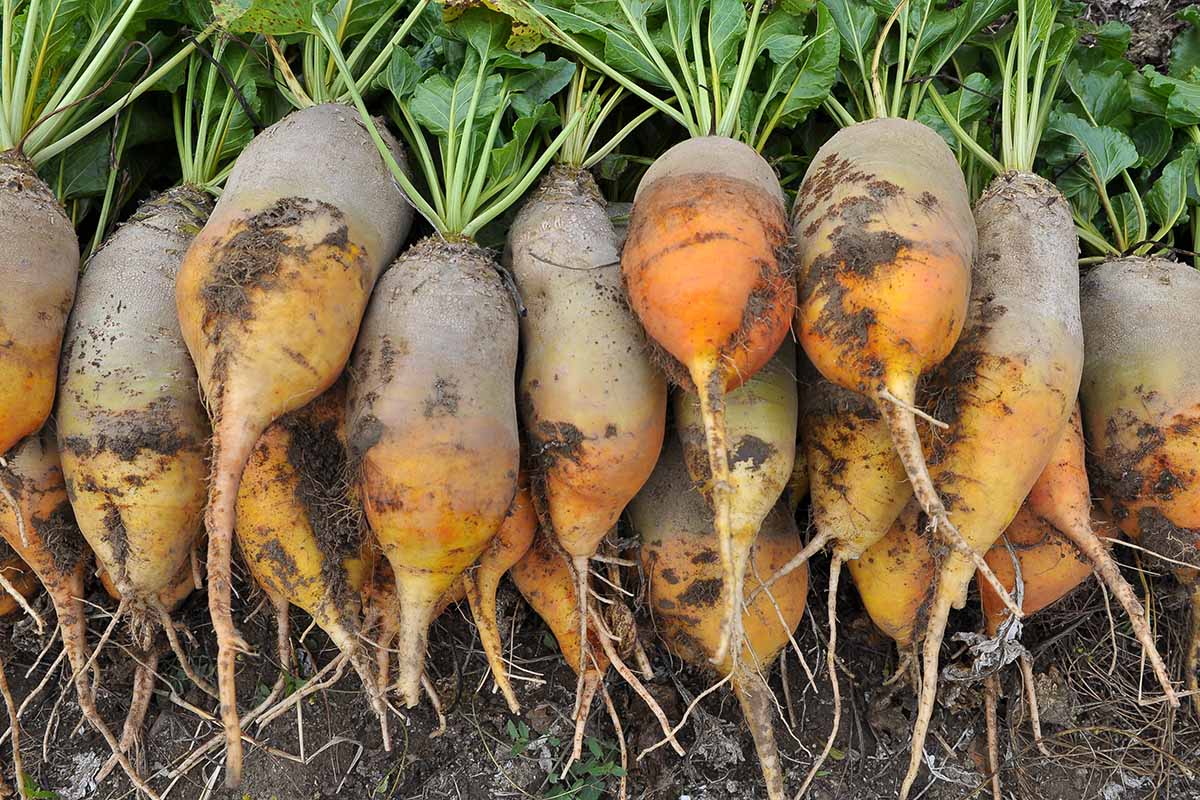
This cultivar shows promise for breeding new beets, but it’s flavorful enough on its own.
The roots vary wildly in shape and size, ranging from around three inches up to seven inches long. They can be round, oval, or even elongated like a parsnip.
Regardless, they’re all ready to go in anywhere from 65 to 100 days from planting, with the younger beets having a sweeter flavor.
If you let them grow to full size, they can store in the field over winter and will grow up to 10 pounds! At that point, they make excellent fodder.
I first came across these at my farmer’s market and noticed that they seemed to have quite the devoted following, with people lining up to grab them.
My interest piqued, so I brought some home, and fell in love with the mildly sweet flavor. You should give them a try if you get the chance.
Managing Pests and Disease
Golden beets aren’t special in that they aren’t immune to the usual beet pests and diseases.
Certain cultivars exhibit some resistance, but as a group, they will experience all the same issues as red or white types.
Insects
Beets are distressingly popular with pests. There are at least 13 relatively common critters that will feed on beets, from aphids and nematodes to all kinds of beetles and maggots.
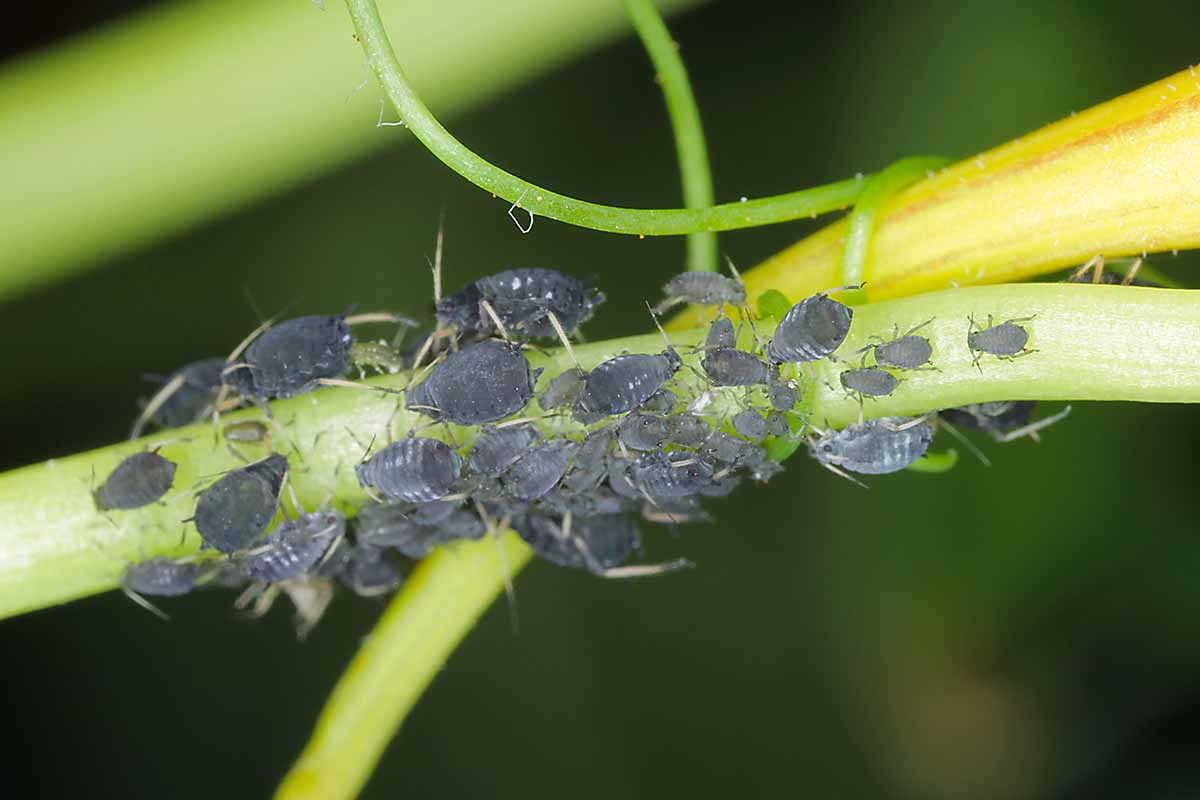
We have a full guide to beet pests that goes through all these unwanted visitors in detail, so pop on over there for the rundown.
I will say that healthy beets aren’t usually troubled too much, meaning that pests only rarely visit, and when they do the damage is minimal.
Aphids are the most common, I find, though they usually only feed on my plants if I let them go to seed or forget to be diligent about weeding.
Most of the time, you can just spray the aphids off with a steady stream of water. If that doesn’t work, read our guide to aphids to learn more strategies.
Disease
When I first started growing beets, it was years before I ran into any diseases.
So, as any unsure grower does, I headed to the internet to try and diagnose the first disease that struck my plant.
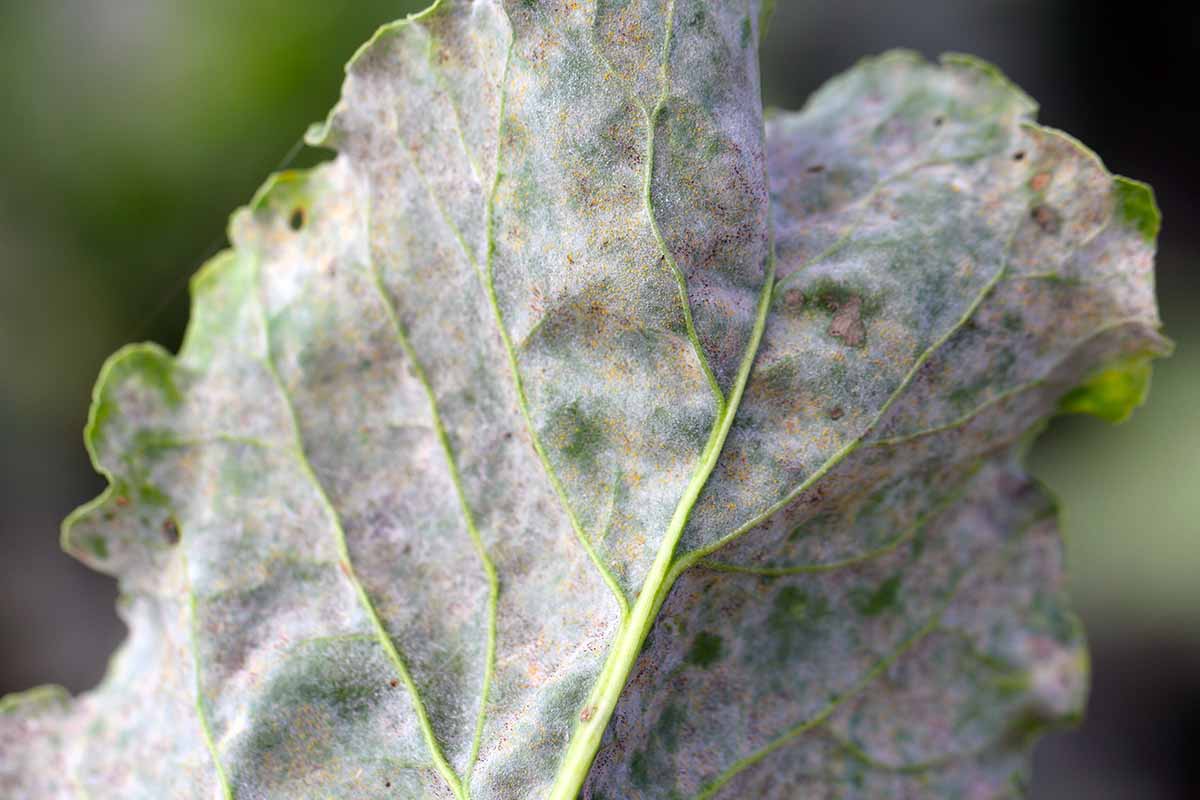
Boy, was that a mistake. Just as you will find a horrifying list if you do an internet search of your medical symptoms, there is a long list of diseases that can attack beets.
Yes, there are lots of potential diseases. If you read our guide to beet disease, we’ll go over 15 of the most prevalent problems.
Downy mildew, powdery mildew, and fusarium are some of the more frequently encountered ailments.
But few of them are common and most can be avoided through crop rotation, appropriate watering and spacing, and by controlling weeds and pests.
Harvesting
As the beetroots near harvest time, you’ll start to see the shoulders pop up out of the soil.
The easiest way to know that they’re ready is to watch for the shoulders while keeping track on your calendar starting from the date planted.
Every cultivar is a little different, so make note of your recommended harvest date and be ready to pull them when that day arrives.

It never hurts to pull them a little early. They’ll still be delicious, if a little smaller and milder.
Waiting too long, however, can have negative consequences. Roots that stay in the ground too long can become woody and they might crack.
You can’t always rely on size. Beets planted closer together, or those that didn’t receive enough sunlight, moisture, or nutrients might be a bit smaller or elongated. It’s fine; they’ll still taste good.
My rule of thumb is to pull everything no later than five days after the recommended harvest date.
To harvest, loosen up the soil around a root using a trowel or rake. Gently grip the beet at the base of the leaves and then lift it up from below, using your trowel or even your fingers.
Greens can be snipped any old time you want, with the younger leaves tending to have a better flavor. Don’t take more than a quarter of the leaves at one time if you still want big, healthy roots.
Preserving
Beets last a long while in storage, which is yet another checkmark in the positives column.
If you plan to eat them in a week or two, store them with the leaves still attached in a plastic bag in the crisper drawer of the refrigerator.
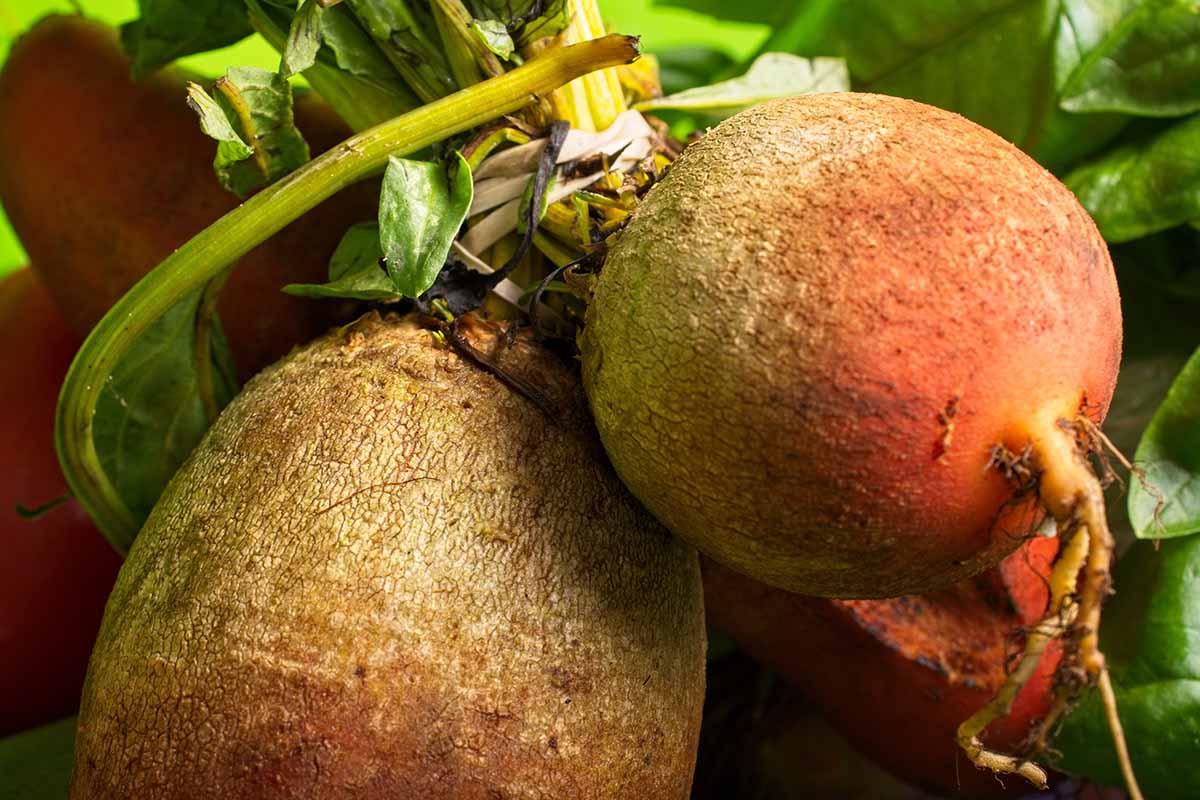
Anything longer than that, and you should remove the leaves. The roots alone can last up to three weeks in the fridge or in a cold storage area like a root cellar.
Place them in a waxed, food-grade cardboard box or wood box.
If the roots start to turn soft, you can still eat them. I like to use these for quick pickles or roasting.
You can also place the roots in a bowl filled with water and keep it in the fridge for a day or two. This will plump them back up a bit. Make sure you clean them thoroughly before use.
If you want to try quick pickled beets, our sister site, Foodal has a tasty recipe that also includes turnips.
Recipes and Cooking Ideas
Golden beets are what I think of as the gateway beet. They aren’t as earthy as red or purple ones, so they don’t scare people off quite as much.
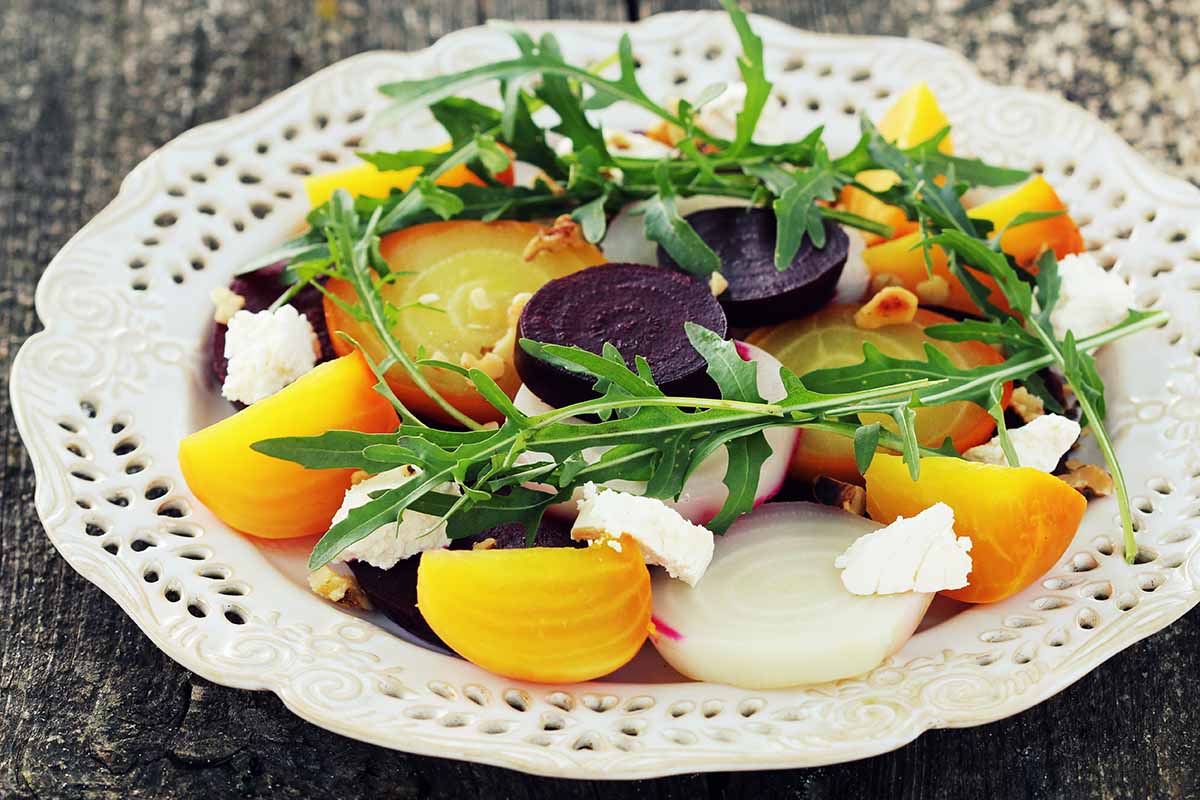
Roasting them with a little bit of oil, salt, and pepper brings out the sweetness, which will convert even the biggest haters.
Or put them in a mixed veggie salad such as this one from Foodal.
If you’re looking for something a little different, you’d be surprised how well beets and anchovies play together.
Chop up as many anchovies as you can stand and mix them in with roasted, diced beets and minced garlic to taste.
The glorious roots also work well with the flavors of avocado, cilantro, chilis, cocoa, cucumbers, dill, horseradish, olives, tomatoes, and watercress.
Quick Reference Growing Guide
| Plant Type: | Biennial root vegetable | Maintenance: | Low |
| Native to: | Mediterranean | Tolerance: | Frost |
| Hardiness (USDA Zone): | 2-11 | Soil Type: | Loose, rich, free of rocks |
| Season: | Spring, summer, fall, winter (warm regions) | Soil pH: | 6.5-7.5 |
| Exposure: | Full sun | Soil Drainage: | Well-draining |
| Time to Maturity: | Up to 90 days for roots | Companion Planting: | Broccoli, cabbage, cauliflower, garlic, kale, kohlrabi, marigolds |
| Spacing: | 3 inches | Avoid Planting With: | Horseradish, mustard, wasabi |
| Planting Depth: | 1/4-1/2 inch (seeds) | Family: | Amaranthaceae |
| Height: | Up to 3 feet | Genus: | Beta |
| Spread: | 3 feet | Species: | vulgaris |
| Water Needs: | Moderate | Sub Species: | vulgaris |
| Common Pests: | Aphids, beet cyst nematodes, beet leafhoppers, beet webworms, blister beetles, cutworms, European corn borers, flea beetles, leaf miners, rove beetles, seed corn maggots, spider mites, vegetable maggots | Common Diseases: | Alternaria leaf spot, bacterial leaf spot, beet curly top, beet mosaic virus, beet rust, beet western yellows, cercospora leaf spot, damping off, downy mildew, fusarium root rot, fusarium yellows, powdery mildew, scab, southern blight, verticillium wilt |
Stay Golden
There are lots of reasons to pick our golden friends over their darker cousins.
Blood-red fingers, countertops, cutting boards, and even urine (visit Foodal for a quick guide to beeturia), to name a few… Dealing with all that juice can be obnoxious.
Then, there’s the fact that they taste a little less earthy and more sweet, which makes them appealing even to those who profess a dislike for beets.
My favorite reason? They’re just pretty! Sometimes it’s okay to be superficial.
Which cultivar do you plan on planting? How will you use your harvest? Share with us in the comments.
If you’re eager to learn more about these polarizing plants, we have a few other guides to beets that might strike your fancy, starting with these:
